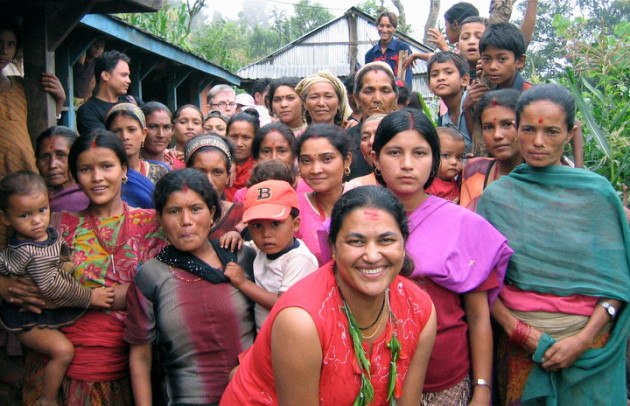Gender in War to Peace Transition in Nepal

File Photo of Nepali Women.
Manoj Karki / Kathmandu: If news reports as of this hour are anything to go by, the CPN (Maoist Centre) that is presently leading the government in Nepal will not have a female member representative in the present Council of Ministers.
Nominal presence of women in Nepal’s cabinet is nothing new. But when a party that is credited to have ‘fast-tracked’ women’s mainstreaming into every aspect of Nepali society including the highly male-dominated security forces of the country does not feel obliged to nominate even a single woman to the cabinet, then it is a matter of serious concern as far as Nepali women’s long struggle for equality is concerned.
The then CPN (Maoist) party led by incumbent Prime Minister Pushpa Kamal Dahal ‘Prachanda’ fought a ten-year-long bloody armed conflict notably against the discrimination, social and political exclusion of the marginalized groups of the country, including women.
At one point of time in the course of the armed struggle, the party boasted of an outstanding 40 per cent women’s participation in the rank and file of the party’s then People’s Liberation Army or PLA. Notable among one of the many woman commanders who were in the frontline of the people’s war was current speaker of the Legislature-Parliament, Onsari Gharti.
Thanks to the same momentum of women’s evolvement into the mainstream Nepali society created by the party during the armed conflict, Nepali leaders, majority of them conservative male, agreed to constitutionally guarantee at least 33 per cent participation of women in all organs of the state including in the parliament.
The Interim Constitution of Nepal 2007 agreed upon following the mainstreaming of the then rebel CPN-Maoist party into democratic politics was a landmark document as far as guaranteeing the rights of the marginalized groups of Nepal is concerned including the 51 per cent population of the country.
Buoyed by the results brought about by the progressive provisions of the interim constitution and the first Constituent Assembly, women rights activists and women political party leaders were already envisioning, and thus, demanding women’s participation in proportion to their population. It may be noted that proportional inclusion was one of the major principles that the Nepali state adopted through the interim statute of the country.
But the euphoria of moving progressively forward among the women folks was hit by a jolt when the presence of women in the second CA in fact decreased and came down to 29.8 from 32.8 in the first CA. This was despite the constitutionally guaranteed provision of at least 33 per cent.
And to add salt to injury and dampen the spirits of the women’s movement in Nepal, the new Constitution of Nepal adopted in September 2015 took away the right of a mother in Nepal to pass on citizenship to her offspring. It had been ensured in the interim constitution, which had provided ground for the new constitution to be adopted.
In the meantime, the country has become euphoric for having women in three of the four major constitutional posts of the country. The appointments one after the other of women as the President, the Speaker and the Chief Justice of the federal republic of Nepal has given some reasons to smile and celebrate for women rights workers, leaders as well as the nation as a whole.
And as it has become with the nomination of Hillary Clinton as the Presidential candidate of one of the two major political parties in the United States of America, Nepali girls and women across the country can at least dream of becoming the next President, Speaker, or the Chief Justice of the country. But the country has not yet got a woman Prime Minister.
However, there are women leaders and activists too who regard these as a result of circumstances rather than by choice and that it represents the manipulative participation of women in mainstream Nepali society. And also that it would not lead to substantial changes as far as the meaningful participation of women is concerned.
Nepal is still in a transition and looking back at the last 20 years of war and peace in the country, there are many positive things to take from as far as the progress of women in the Nepali society is concerned.
Nevertheless, the reversal in the citizenship provisions in the new constitution of the country and the failure of a party that revolutionized gender mainstreaming in Nepali society to pick a woman cabinet member is testimony to the fact that the Nepali women’s movement, despite being one the oldest movements in the country, still has a long way to go before realizing its ultimate goal of establishing woman as an equal member of the Nepali society in every real sense. RSS
